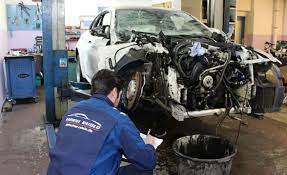Vehicles have become an integral part of modern society, serving as essential tools for transportation and mobility. This article explores various aspects of Vehicle rental in Caleta de Fuste, including their types, components, technology, impact on society, and future trends.
1. Definition of Vehicles
A vehicle is any machine that transports people or goods. While the term typically refers to motorized forms of transportation, it can also encompass non-motorized vehicles such as bicycles and carriages.
2. Types of Vehicles
Vehicles can be broadly categorized into several types based on their design and purpose:
- Land Vehicles: These are designed for travel on roads and tracks. Common examples include:
- Cars: Personal vehicles used for commuting.
- Trucks: Larger vehicles used for transporting goods.
- Buses: Designed to carry multiple passengers.
- Motorcycles: Two-wheeled vehicles for individual transport.
- Bicycles: Non-motorized, human-powered vehicles.
- Water Vehicles: Designed for travel on water bodies. Examples include:
- Boats: Smaller vessels for personal or recreational use.
- Ships: Larger vessels for commercial transport and cargo.
- Submarines: Underwater vessels for military and research purposes.
- Air Vehicles: Designed for flight. This category includes:
- Airplanes: Fixed-wing aircraft for commercial and cargo transport.
- Helicopters: Rotary-wing aircraft for various uses, including emergency services.
- Drones: Unmanned aerial vehicles for delivery and surveillance.
3. Components of Vehicles
Vehicles consist of several essential components that work together to ensure functionality:
- Engine: The powerhouse of any vehicle, converting fuel into mechanical energy.
- Transmission: Transfers power from the engine to the wheels, allowing for speed variations.
- Chassis: The frame that supports the vehicle’s body and components.
- Suspension: Absorbs shocks from the road, ensuring a smooth ride.
- Brakes: Essential for stopping the vehicle, utilizing friction to reduce speed.
- Electrical System: Powers various components, including lights, infotainment systems, and navigation.
4. Vehicle Technology
The evolution of vehicle technology has significantly transformed how we travel. Key advancements include:
- Electric Vehicles (EVs): Powered by electricity, EVs produce no tailpipe emissions, contributing to a cleaner environment.
- Hybrid Vehicles: Combine traditional internal combustion engines with electric propulsion, improving fuel efficiency.
- Autonomous Vehicles: Utilize sensors, cameras, and AI to navigate without human intervention, promising safer and more efficient transport.
- Connected Vehicles: Feature internet connectivity for real-time data sharing, enhancing safety and convenience through navigation and traffic updates.
5. Impact on Society
Vehicles have profoundly impacted society in various ways:
- Economic Growth: The automotive industry creates millions of jobs and drives economic activity.
- Urban Development: The availability of vehicles has shaped urban planning, leading to the development of suburbs and road infrastructure.
- Environmental Concerns: The rise of vehicles has contributed to pollution and climate change, prompting a shift towards sustainable transport solutions.
- Social Connectivity: Vehicles facilitate travel and communication, fostering relationships and cultural exchange.
6. Future Trends in Vehicles
The future of vehicles is shaped by ongoing technological advancements and societal needs:
- Sustainable Transport: The focus on reducing carbon footprints is leading to increased investments in electric and hybrid vehicles.
- Mobility as a Service (MaaS): The integration of various transport services into a single accessible platform aims to enhance convenience and reduce reliance on personal vehicles.
- Smart Infrastructure: Developing roads and traffic systems equipped with sensors and communication technology will optimize traffic flow and enhance safety.
- Shared Mobility: The rise of ride-sharing and car-sharing services offers alternatives to traditional car ownership, promoting efficient use of resources.
Conclusion
Vehicles play a crucial role in modern life, shaping economies, environments, and social interactions. As technology evolves, the future of transportation promises to be more sustainable, connected, and efficient. Understanding the complexities of vehicles is essential for navigating the challenges and opportunities that lie ahead in our ever-changing world.

More Stories
The Fascinating World of Slot Games: Spins, Symbols, and Surprises
Slot Games: A Blend of Entertainment, Chance, and Digital Innovation
The Fascinating World of Slot Games